Introduction
Winter backpacking (i.e., backpacking in snow and/or cold) can be intimidating. Gear that is heavy and bulky, long nights, hiking through deep snow, dealing with cold temperatures and wind – these are some of the challenges of hiking in the winter.
This winter, I filmed an overnight trip I took in SE Wyoming. The area where I hiked is crisscrossed with a summer trail network and frontcountry picnic and camping areas that aren’t accessible during the winter. I hiked through these areas but ventured further into the backcountry where I spent the night.
Low temperatures dropped to the upper single digits (deg F) and the snowpack was variable from zero to several feet.
The video is presented in a vlog-style chronological narrative that includes some skills instruction, some gear commentary, and some reflections of my experience on the trip.
This article provides more insight into my gear list, as well as post-trip notes.
For more info, listen to the related podcast about winter backpacking gear!
Watch the Video:

Video Timecodes: Skills, Gear, and Highlights
- The Hike In
- Footwear – 1:33
- Trekking clothing – 6:11
- GPS app/navigation – 9:18
- Rock scrambling – 16:20
- Mental mistakes – 22:50
- Sunset – 24:18
- Evening in Camp
- Arriving in camp – 28:00
- Staying organized in camp – 29:30
- Adjusting clothing for maximum warmth – 31:29
- Selecting a shelter site – 32:38
- Preparing a sleeping platform in the snow – 33:42 and 35:58
- Satellite messaging – 34:42
- Pitching a flat tarp in snow – 37:00
- Setting up the bed – 39:52
- Collecting and cutting firewood – 41:58
- Building a fire – 45:12
- Cooking over the fire – 46:59
- Podcast Recommendation (“Walk to Connect“) – 48:21
- Going to bed/reflections – 49:10
- Morning in Camp
- Sunrise / wakeup – 51:27
- Wood stove cook Kit, fuel collection – 53:06
- Using the Suluk46 Una titanium wood stove – 54:36
- Breakfast in a bag – 59:58
- Review of sleeping comfort from the night – sleeping warmth, bag ratings, the REI Magma, condensation in bivy sacks, wind, tarp performance – 1:00:55
- Firestarting skills and kit – 1:04:06
- LNT fire area restoration – 1:07:30
- Tarp rigging: guylines, trucker hitch, and deadmen in snow – 1:08:55
- Commentary on snow stakes – 1:13:12
- Packing up – 1:13:52
- Northern Lites Honey Badger snowshoes – 1:15:41
- The Hike Out
- Leaving camp – 1:16:27
- Clothing for hiking in winter sun – 1:16:40
- Challenges of winter terrain and the added effort required – 1:18:03
- Water treatment using Aqua Mira – 1:20:56
- Snowshoeing in deep, unconsolidated snow – 1:23:44
- Commentary on vegetation mastication – 1:25:47
- Lunch amongst large boulders of Sherman granite – 1:29:47
- Final comments – 1:32:35
- Acknowledgments and credits – 1:33:07
Notes from the Trip
- This was a “backyard adventure” for me. This is one of the closest backcountry locations for me, with the trailhead about 15 miles from my house. It’s a good reminder that adventure, fun, and solitude can be found very close to home.
- I was in a hurry getting ready for this trip. Construction projects, travel, and preparing for an upcoming family surgery have been taking a toll on my ability to stay organized and be able to prepare for a trip quickly, so I suffered some minor inconveniences as a result of packing quickly:
- I overpacked, especially camera gear. I didn’t need the tripod, so many extra batteries, or a battery charger, and could have shaved a few pounds there. In addition, I brought the wrong audio cable so I wasn’t able to capture good pro audio through my external mic, which added more dead weight and compromised the audio quality in the video.
- I packed quickly, shoving things in my backpack, without paying attention to how I might need them later that evening. As a result, I didn’t have quick access to my headlight for hiking after dark, so I ended up navigating with my video light! And when I arrived at camp, I had to remove almost everything in my pack to access the things I needed right away – my parka, puffy pants, thin gloves, and headlight.
- I (smartly) slept with all the gear I didn’t want to freeze (socks, shoes, overboots, water bottle), storing it in my inflation pump bag – except my Aqua Mira – which froze overnight! It took a while for me to discover that, and to thaw the bottles out enough to use them! I was running a bit dehydrated by the time I was able to treat water.
- There was a vegetation mastication operation occurring in the area. Had I known this, I would have hiked in a different locale. It was pretty noisy on the 2nd day, as I hiked towards it, and while I don’t have any philosophical opposition to this particular project, it was certainly disruptive to my desire for quiet solitude.
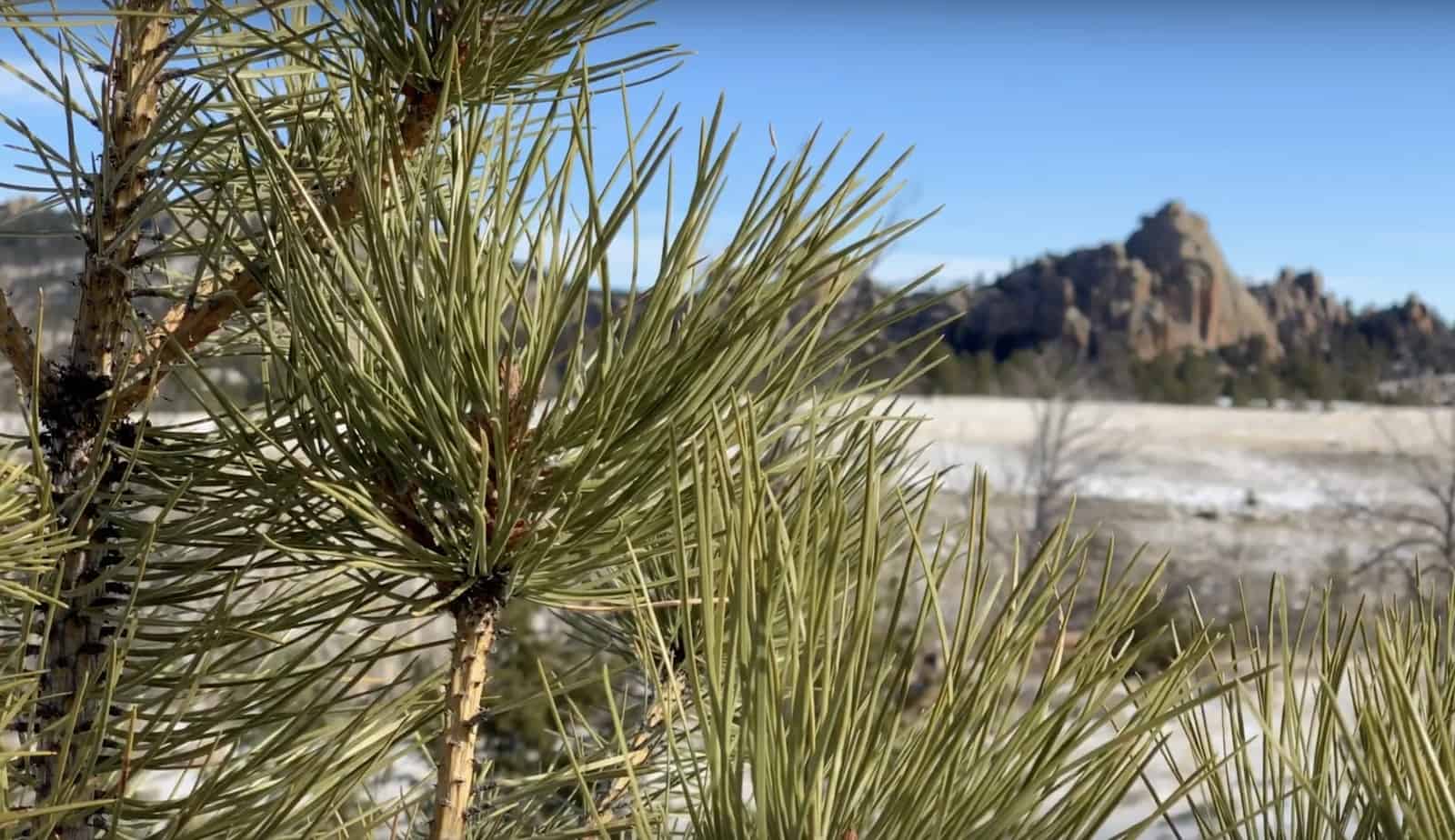
Gear List
All gear items link to the actual product that I used on this trip, except items marked with an asterisk (*). In the latter case, I proposed a similar substitute.
Gear Notes
Footwear and Traction Systems
- The only scenario where I can see the STABILicers Hike Macro Traction Ice Cleats being feasible is when (a) temperatures are so cold that you need insulated overboots, AND (b) when you are hiking on packed, steep, icy trails. For most backcountry pursuits, snowshoes are more versatile. For what they are (a microspike), this Stabilicer model is almost comically heavy. Its only real advantage is that there’s a rubber footbed above the cleat that won’t chew up the underside of a neoprene overboot (unlike traditional microspikes, which are much lighter and more suitable for hiking in lightweight footwear as long as you’re not wearing overboots).
- The Northern Lites Honey Badger snowshoes with speed bindings are some of the most aggressive, easy to use, and lightest snowshoes on the market. My first experience with these is extremely positive. However, they are a few ounces heavier than my MSR Lightning Ascents, and may be a little less durable – time will tell. The speed binding on the Honey Badgers is extremely comfortable, and the steel crampon is very sharp and aggressive on steep, icy, and rocky terrain.
- The combination of Gore-Tex socks and Forty Below TR Light Energy overboots with a waterproof-breathable mid-height trail running shoe is simply superb for snowshoeing in winter conditions. My feet never got cold, on the trail, or in camp.

Clothing
- The Brynje Merino Wool Fishnet S/S (short sleeve) T-Shirt, worn under a Patagonia Nano Air Light Hoodie for cold conditions or under a Patagonia Houdini Jacket for warm conditions was a very comfortable and versatile base layer. These systems kept me drier than just about any other winter layering combo I’ve worn, especially when climbing or slogging through deep snow and I was working hard and sweating.
- A pair of thin puffy pants and a very light parka (Feathered Friends Helios) was plenty warm for spending hours in camp after dark in temperatures around 10 deg F. I’ve also been fine when temperatures have been colder. If there is wind, however, and temperatures are below zero F, I would need something warmer.
- My primary glove for trekking in these temperatures is a waterproof-breathable pile glove with a Gore-Tex shell and full leather palm. It’s warm, durable and protective enough for firewood collection, and it dries quickly (by removing the liners and stowing them in a jacket). For in-camp use, I prefer to wear fleece liner gloves and use my parka pockets when my hands get cold. As long as my hands were in gloves (rather than rock scrambling without gloves!), my hands stayed warm and comfortable.

Navigation
- A phone update rendered my Garmin inReach app useless, and I forgot to update everything before I left. This resulted in the laborious operation of the Garmin inReach Mini with respect to SMS communications. I sent my wife one text message to let her know I arrived in camp OK. The process of remembering how to do it, figuring out what I didn’t know, and trying to type a message on multiple occasions, took quite a long time. This is the only part of the trip where I experienced mild irritation.
- The battery on my Fenix HL50 headlight expired midway through the evening, and I switched over to a Photon II Pro Microlight. Lighter than a spare battery, and made for a quicker transition!
- I’m recovering from a long bout of papillary conjunctivitis (I’m a contact lens wearer normally), an allergic reaction to a foreign body in the eye (most likely a result of construction debris). I don’t own a pair of prescription sunglasses, so I’ve been wearing goggles while hiking this year. My favorite goggles so far have been the Smith I/O (I wear the smaller women’s model) with photochromic lenses (variable light transmission from 30% to 50%). They are simply outstanding in the wind and cold, and the spherical rose photochromic lenses are an absolute joy to look through. I’ll be adding these to my winter hiking kit in the future!
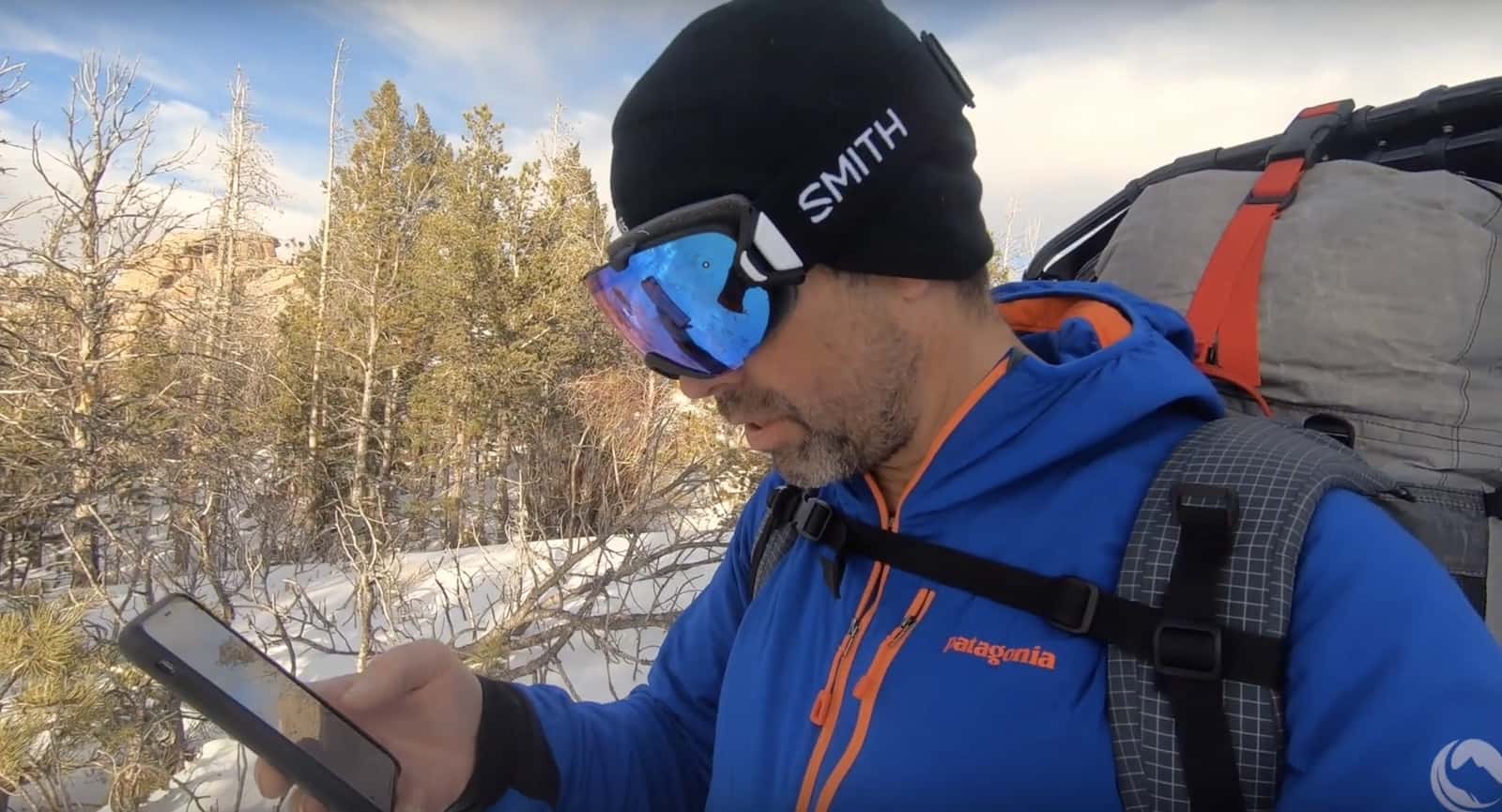
Shelter & Sleep Systems
- A flat tarp doesn’t provide a lot of protection, especially in the wind, but the views and openness are sure nice. One of the highlights of my trip was waking up, opening my eyes, and watching the sunrise without having to move!
- The Hyperlite Mountain Gear Flat Tarp has seen more than its share of adventures over the past several years, and even after suffering some hearty wind storms, including on this trip, there still doesn’t seem to be a seam out of place or coming loose. I can’t say this for any of the other DCF tarps I’ve owned.
- I’ve used the REI Magma 10 down sleeping bag for two years now, and it continues to perform beyond my expectations for a 30 oz bag. I slept very warm on this trip, with nighttime temperatures in the low teens. I’m looking forward to using the 2019 iteration of this bag, the Magma 15, which is a few ounces lighter and should offer similar performance in these conditions.
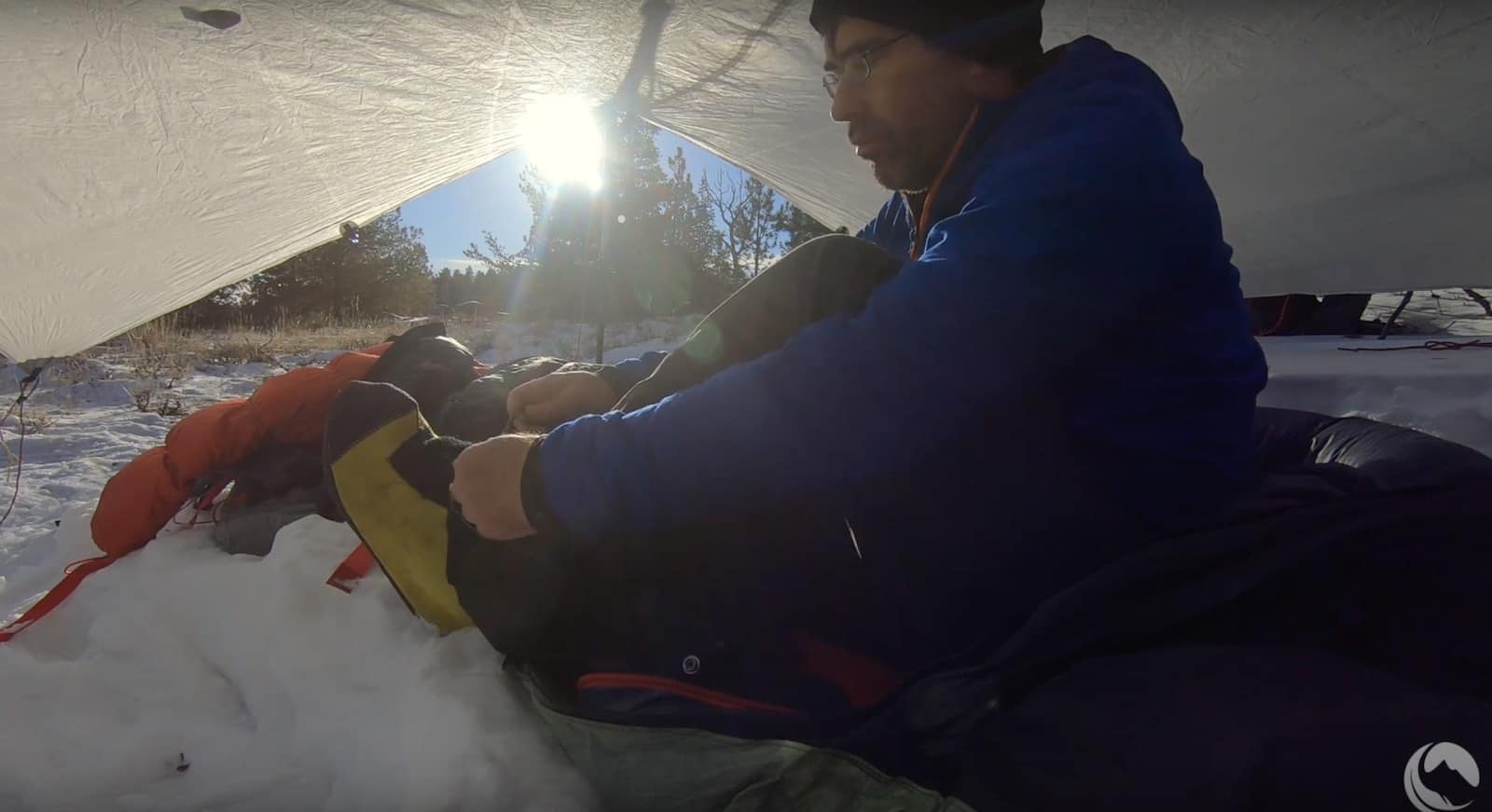
Fire Kit
- The Bahco Model 396 Laplander saw is one of the best cutters I’ve ever used. I wish it was lighter. I think I said in the video that it weighed around 1/4 of a pound but I got it mixed up with my lighter (and very poorly cutting) Gerber saw. The Laplander weighs a few ounces more, and I find the extra weight worth it if there’s a lot of cutting to do. It goes with me on almost every winter trip for firewood prep and building stick roofs on my snow trenches.
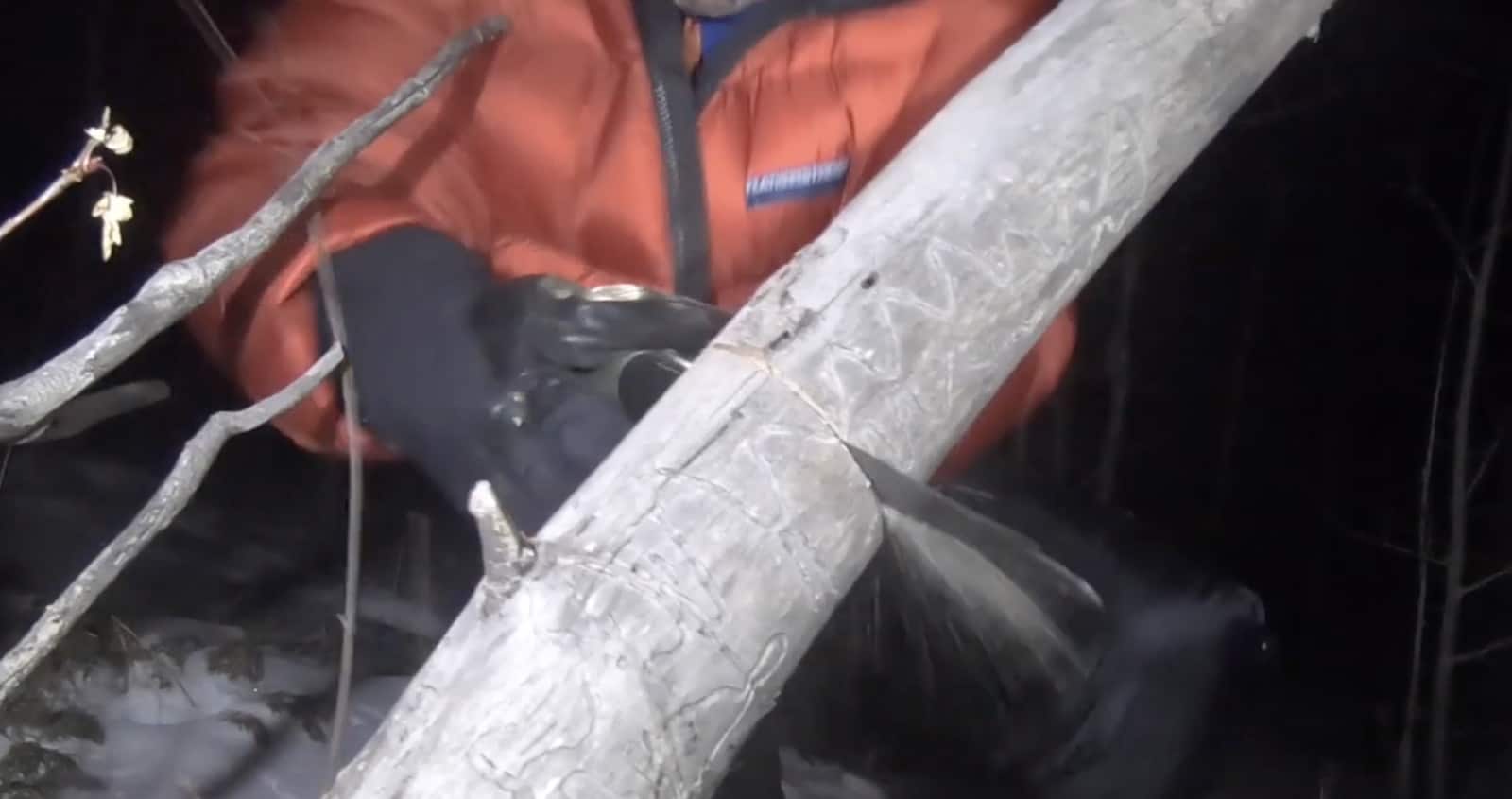
Cooking and Water
- The Suluk46 Una Titanium Wood Stove is a huge win. At 2.5 oz, it cuts the weight of my wood stove in half (from the Bushbuddy Ultra) with no decrease in performance. I used beetle-killed pine needles and dead sagebrush twigs and the stove burned both very clean. Well done!
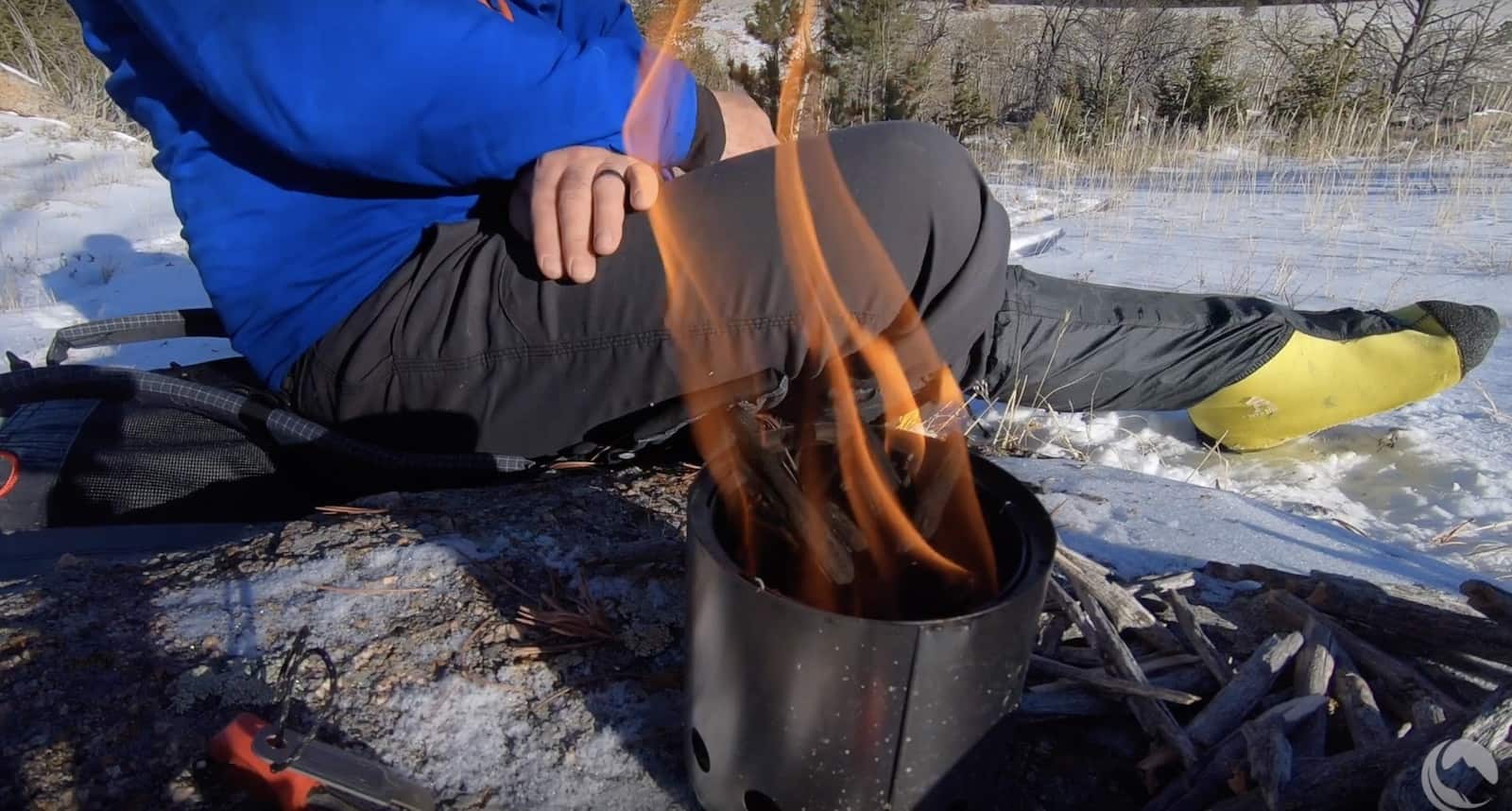
Acknowledgments
Thanks to the following companies for making this video possible through financial and/or gear support:
* These companies have entered into sponsorship agreements with us in 2019 in our effort to support our effort to produce more engaging content and reduce our reliance on network advertising (e.g., “Google Ads”). Thank you!
Product Review Disclosure
Updated September 15, 2018
- How we acquired these products: Product(s) discussed in this review were either acquired by the author from a retailer or otherwise provided by the manufacturer at a discount/donation with no obligation to provide media coverage or a product review to the manufacturer(s).
- We do not accept money or in-kind compensation for guaranteed media coverage: Backpacking Light does not accept compensation or donated product in exchange for guaranteed media placement or product review coverage.
- Affiliate links: Some (but not all) of the links in this review may be “affiliate” links, which means if you click on a link to one of our affiliate partners (usually a retailer site), and subsequently make a purchase with that retailer, we receive a small commission. This helps us fund our editorial projects, podcasts, instructional webinars, and more, and we appreciate it a lot! Thank you for supporting Backpacking Light!




Home › Forums › Field Notes: Winter Backpacking in Southeast Wyoming